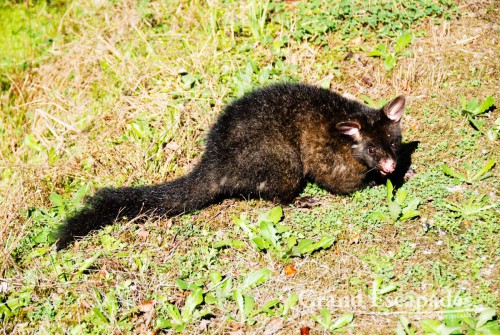The movie “Darwin’s Nightmare” dealt with the heavy consequences the introduction of the Nile Perch had on Lake Victoria in Tanzania and eventually on the people of the area. During our trip, we repeatedly have heard about the problems arising from introducing animals and plants not native to a region or country. Usually guides, who conduct tours through a bird sanctuary or nature reserve, bring this issue to the attention of the visiting overseas tourists.
In Patagonia and especially Tierra del Fuego, we saw with our own eyes what incredible damage beavers brought in from Canada have caused. In the absence of natural predators, they multiplied at an uncontrollable pace and did what they are meant to do: build dams! The size of these dams is incredible and naturally, they fulfil their function, that is to say flood vast areas. More beavers mean more dams and hence more flooded areas that turn the countryside into a wasteland because all the trees simply drown. Yet, what we heard in New Zealand is clearly reaching another dimension!
New Zealand broke away from the southern super continent Gondwana that existed about 500 to 200 millions years ago. It became an independent group of 800 islands, not linked to any continent whatsoever. Thus no mammal had set foot on what is now New Zealand when the Maoris settled here, about 1.000 years ago. They found mostly fauna and flora endemic to New Zealand, especially many birds, often flightless, that had no predators.
The Maori brought dogs and rats from other islands. However, it was the Europeans colonization of these islands that introduced mammals on a large scale. Amongst these, rabbits were the first “settlers”. They soon became a terrible plague: since six rabbits eat the same amount of grass than one sheep, one can imagine the kind of passion farmers developed for these cute bunnies!
To fight the rabbits, the early farmers imported new predators, like cats, stoats, weasels, ferrets and the now most hated animal: possums. But these rather had a feast on the abundant endemic birds, many of them flightless and their eggs, than on the much quicker rabbits. Many birds have therefore become extinct or close to extinction.
Numerous projects have been launched to protect endangered species like the Kiwi, Black Stilt, Weka, Kea, Albatross etc… mainly by protecting the eggs and breeding birds in sheltered areas. Also Penguins and Seal colonies enjoy complete protection and their populations are slowly but steadily recovering.
But more challenging projects are underway: one location for such an endeavour is Secretary Island, New Zealand’s fifth largest island, located near the end of Doubtful Sound towards the Tasmanian Sea. All animals not native to New Zealand are “removed” from there, which means they are poisoned, trapped, and hunted down: rabbits, weasels, ferrets, deer, stoats etc…
After this onslaught, native birds to New Zealand, many near extinction, are reintroduced on the island. The project is already a success, with the island almost being “pest free”, the term coined for this undertaking, and endangered native animals are steadily recovering.
We have heard nature guides enthusiastically lecturing about it. Of course, it is all grand if these beautiful birds survive. Nevertheless, to us there was also a sour note to it, like the biblical search for the Garden of Eden on the one hand, but also a smart idea to create a future tourist cash-cow, like some kind of “Jurassic Park”.
There are many locations all over Zealand where such “pest free zones” are being established. Another approach to get rid of this pest is simply running them over in a car. New Zealand’s roads are littered with dead animal cadavers. Once, we stopped to chase a confused and injured possum of the road. We got pretty blank stares from drivers passing by…


No comments yet.